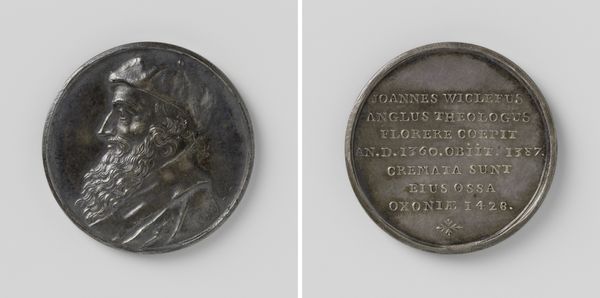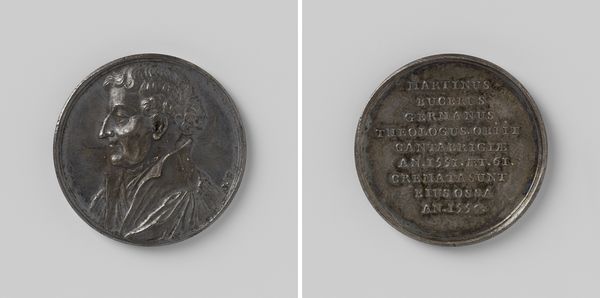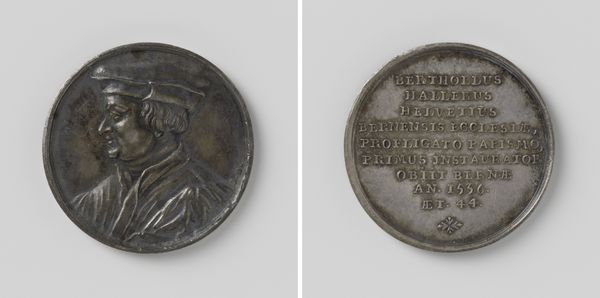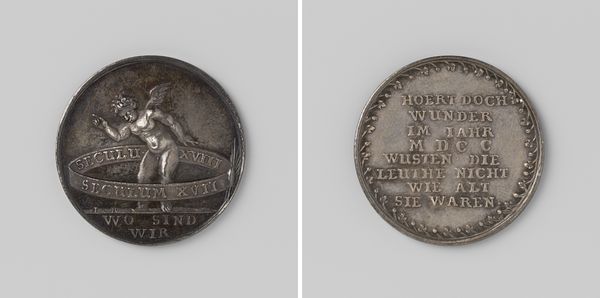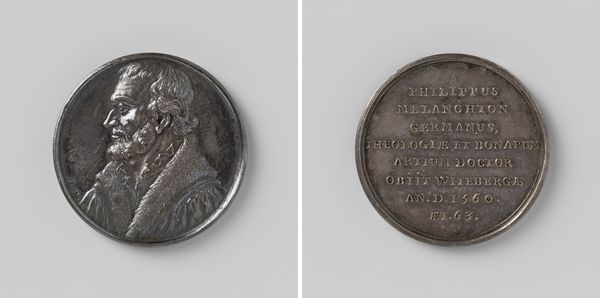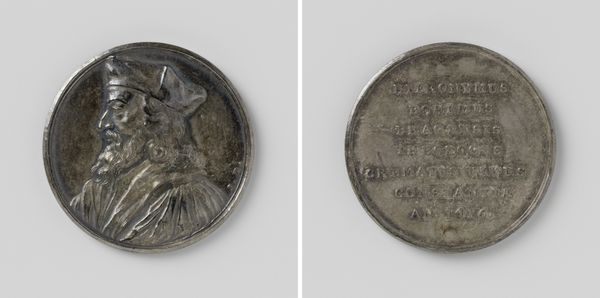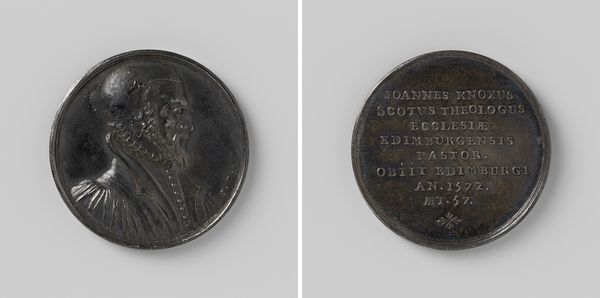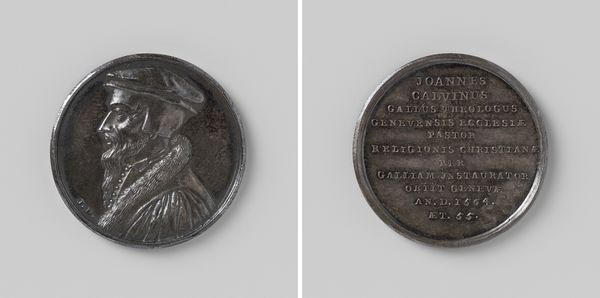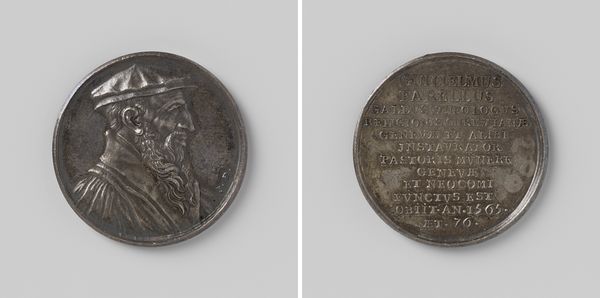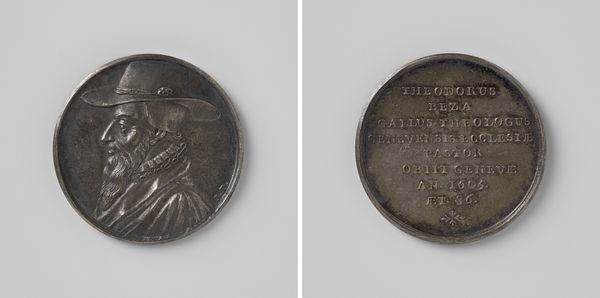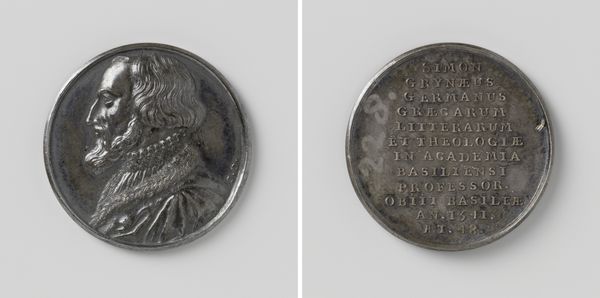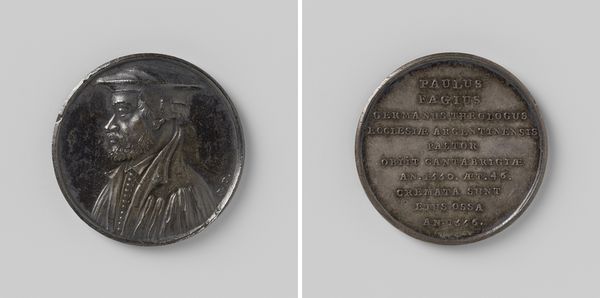
metal, sculpture
#
portrait
#
medal
#
baroque
#
metal
#
sculpture
#
sculpture
Dimensions: diameter 2.8 cm, weight 10.22 gr
Copyright: Rijks Museum: Open Domain
Curator: This piece, dating back to 1725, is a medal sculpted by Jean Dassier, titled "Pierre Viret, reformer in Switzerland and France." What are your initial thoughts? Editor: The austerity strikes me first. It's a severe, almost solemn depiction in metal, conveying a great deal of gravitas despite its small scale. One could say even oppressive. Curator: Indeed. Dassier’s choice of metal lends the work a sense of permanence, mirroring Viret's lasting impact. As a medal, it carries inherent symbolism as a public declaration of merit and memory. The choice of metal makes sense. Editor: Exactly, but I find the very *publicness* interesting. Medals like this were explicitly created to shape public perception. They embody the politics of remembrance. I wonder about the extent to which such medals become tools for ideological agendas? Curator: A valid concern. But I also view such pieces as more intimate artifacts. The very form, small and tangible, means it may have been worn or displayed as a signifier of allegiance and identification. Looking at the relief of Viret’s face, note the somber yet strong features. What kind of ideas might he convey? Editor: Well, his dress is a statement in itself! I see echoes of traditional religious iconography, perhaps intended to associate Viret with established virtues and authority, and yet, with simplicity in style that alludes to Protestant values, wouldn’t you say? The two exist in conversation. Curator: Precisely! Note also the text inscription— PETRUS VIRETUS HELVETIUS THEOLOGUS, etc. — all framing the man in terms of roles and legacy. And notice how that is all we have, just the name, function and lifetime. Editor: It highlights the social function of art, doesn't it? This isn't just a portrait; it's a historical document. And looking at it now, through our own historical lens, we begin to question, interpret and reshape the dialogue. Curator: Which also echoes how such pieces transcend singular intention. Ultimately, its impact resonates throughout social memory, doesn't it? Editor: Yes, exactly. History remains unfinished and open to ongoing visual dialogue.
Comments
No comments
Be the first to comment and join the conversation on the ultimate creative platform.
